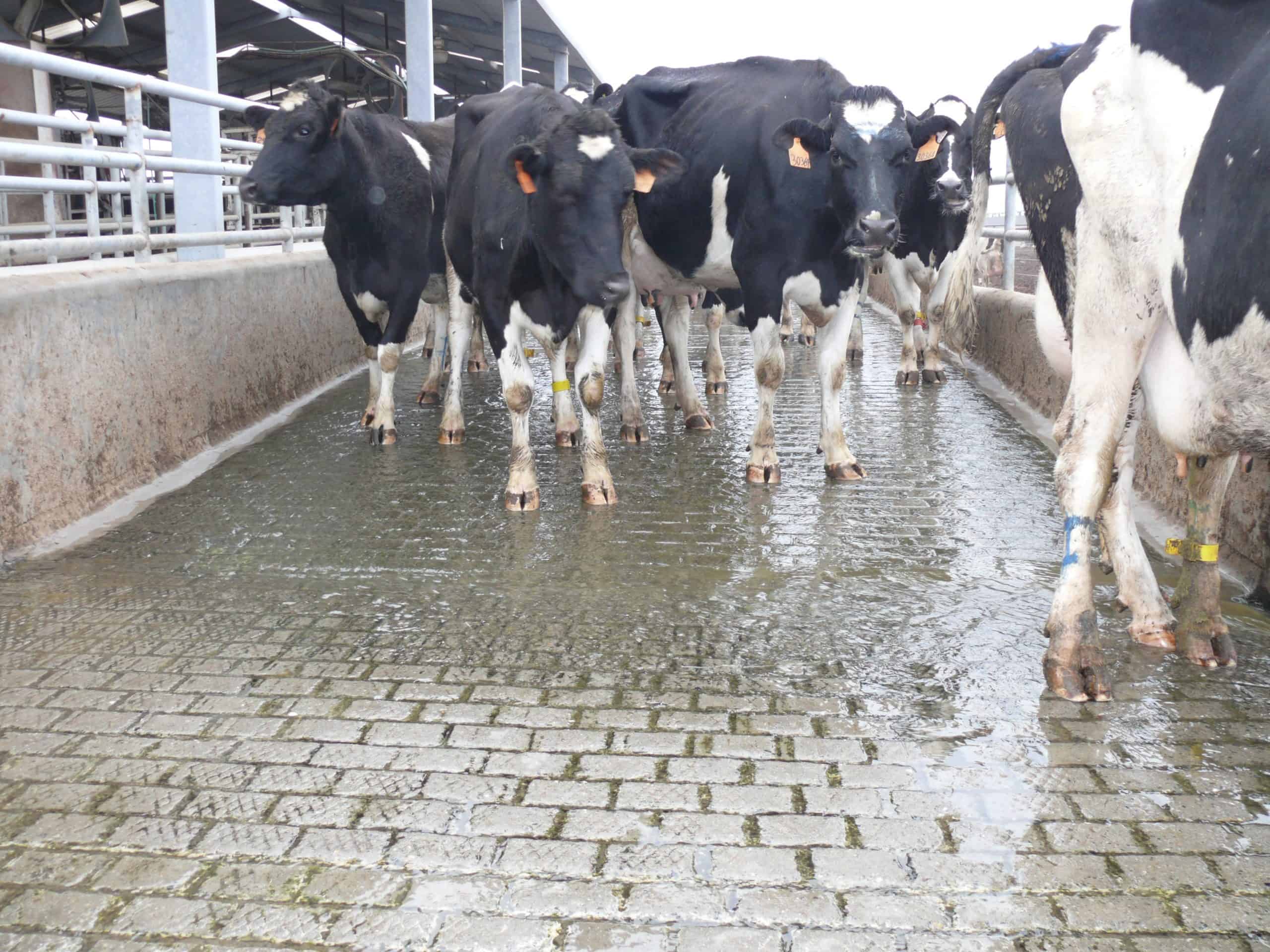
As the summer heat wave rolls in, some producers may be thinking about installing a footbath to better manage hoof health. If you’re ready to take the plunge, here are some general guidelines for installing and maintaining a footbath on your dairy farm:
Footbath Placement: Many veterinarians suggest putting the footbath in a well-lit, ventilated area of the barn, somewhere near the parlor exit lanes. By placing the footbath there, you can make sure each cow makes a pass after being milked.
Footbath Size:
Remember: The sides of your bath should create a tunnel. Check out this illustration by Dr. Nigel Cook of the University of Wisconsin-Madison.
Footbath Frequency of Use: Frequency of use for footbaths is based on leg hygiene. Dr. Cook suggests that cows be sorted based upon the hygiene rating of their leg area, with a score of one being clean, and a score of four being very dirty. Check out Dr. Cook’s Hoof and Leg Hygiene Chart here. Initially, your herd may need to use the bath once a day, but as you continue the program, they might only need to use it once a week.
Footbath Solutions and Additives: Solutions, like hand soap or rock salt, help clean manure off a cow’s leg. However, Cook does not recommend using only solutions. “Footbath programs should always contain one or more disinfectants,” says Cook.
The most common disinfectants used in footbaths are copper or zinc sulfate. These chemicals target the digit region of a cow’s foot.
To cut down on the amount of copper or zinc sulfate in the footbath, include an additive such as AgroChem’s HoofMax. HoofMax can increase the longevity of copper sulfate, which can reduce both the amount of copper required, as well as the overall cost of the footbath. Or consider a footbath concentrate like HealMax to manage hoof health without heavy metals or formaldehyde.
Footbath Maintenance: In order to keep your footbath clean and efficient, monitor the following:
By building a footbath, you can control an outbreak of Digital Dermatitis in your herd, maintain hoof hardness, and improve your herd’s overall health.
For more information about installing a footbath on your dairy operation, see your hoof trimmer, or veterinarian.